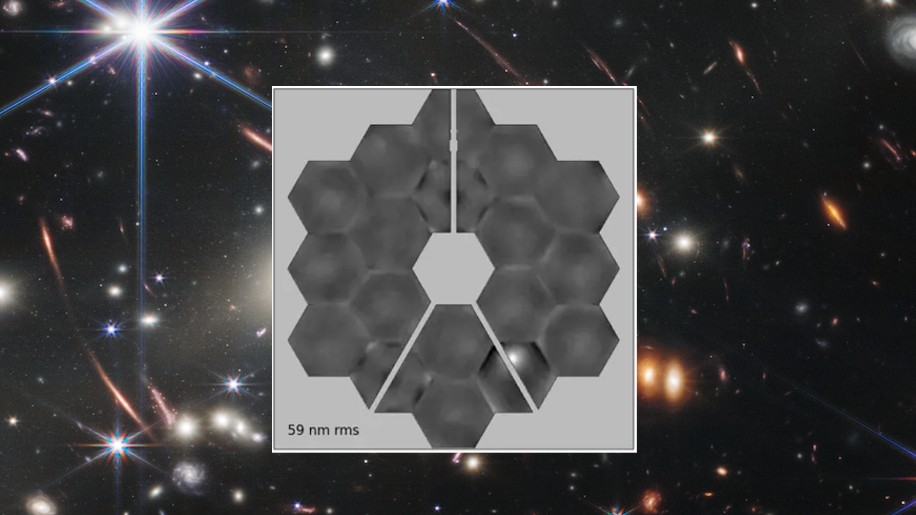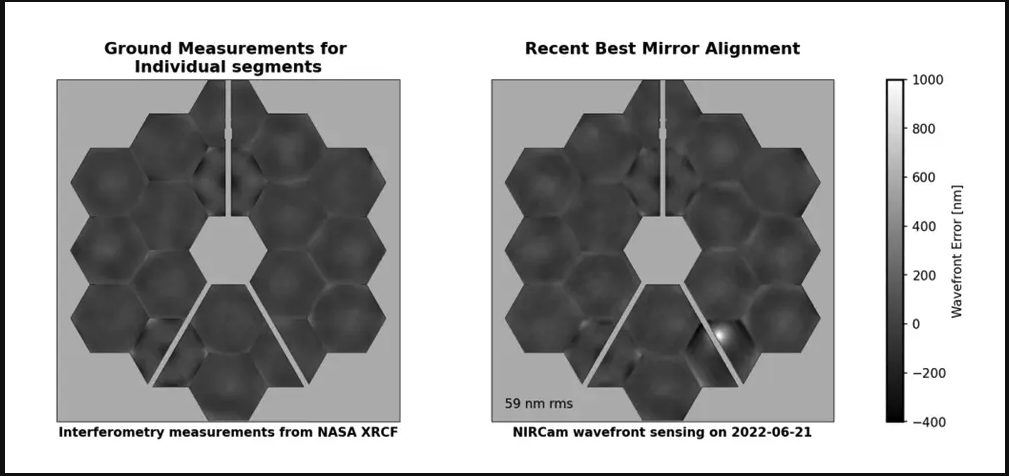Meteor impact left 'uncorrectable' damage to the Webb telescope's mirror, new report shows
Fortunately, engineers planned for this.

Since launching on Dec. 25, 2021, NASA's James Webb Space Telescope (JWST) has been pelted by at least 19 tiny space rocks — including one large one that left noticeable damage on one of the telescope's 18 gold-plated mirrors.
In a sprawling new status report posted to the pre-print database arXiv.org, NASA researchers have shared the first images showing the extent of that damage. Seen on the C3 mirror in the lower right-hand corner of the image, the impact site appears as a single bright white dent besmirching the golden mirror's surface.
The impact — which likely occurred between May 23 and May 25 this year — left "uncorrectable" damage to a tiny portion of that mirror, the report says. However, this little dent doesn't seem to have inhibited the telescope's performance at all. In fact, the JWST's performance is exceeding expectations "almost all across the board." (Good news for fans of stunning space images.)
Related: The James Webb Space Telescope's first images are here, and they're spectacular
Tiny rocks known as micrometeoroids are an all-too-familiar threat to spacecraft in near-Earth orbit. The U.S. Space Surveillance Network keeps track of more than 23,000 pieces of orbital debris measuring larger than the size of a softball — however, the millions of nearby space chunks that are smaller than that are almost impossible to monitor.
Instead, NASA and other space agencies plan for unavoidable impacts.
"Inevitably, any spacecraft will encounter micrometeoroids," the new report says. So far, six micrometeoroids have left noticeable "deformities" on the JWST's mirrors, amounting to about one noticeable impact per month since the telescope launched.
Get the world’s most fascinating discoveries delivered straight to your inbox.
That's all within the realm of the expected. When building the JWST, engineers intentionally hit mirror samples with micrometeoroid-sized objects to test how such impacts would affect the telescope's performance.
What was unexpected, however, was the size of the larger impactor that dented the C3 mirror. This space rock was seemingly larger than the team had prepared for, and researchers are now trying to assess the impact that further strikes like this could have on the JWST.
The new status report, which has not yet been peer-reviewed, was authored by more than 200 scientists working at NASA, the European Space Agency (a collaborator in the JWST's construction and launch, along with NASA and the Canadian Space Agency) and other science institutions around the world. Despite the unexpected impact to the C3 mirror, the researchers found that the telescope is working flawlessly after the 6-month commissioning process, and has a bright future of discovery ahead of it.
"JWST was envisioned 'to enable fundamental breakthroughs in our understanding of the formation and evolution of galaxies, stars, and planetary systems,'" the report says. "We now know with certainty that it will."
Originally published on Live Science.

Brandon is the space / physics editor at Live Science. With more than 20 years of editorial experience, his writing has appeared in The Washington Post, Reader's Digest, CBS.com, the Richard Dawkins Foundation website and other outlets. He holds a bachelor's degree in creative writing from the University of Arizona, with minors in journalism and media arts. His interests include black holes, asteroids and comets, and the search for extraterrestrial life.

